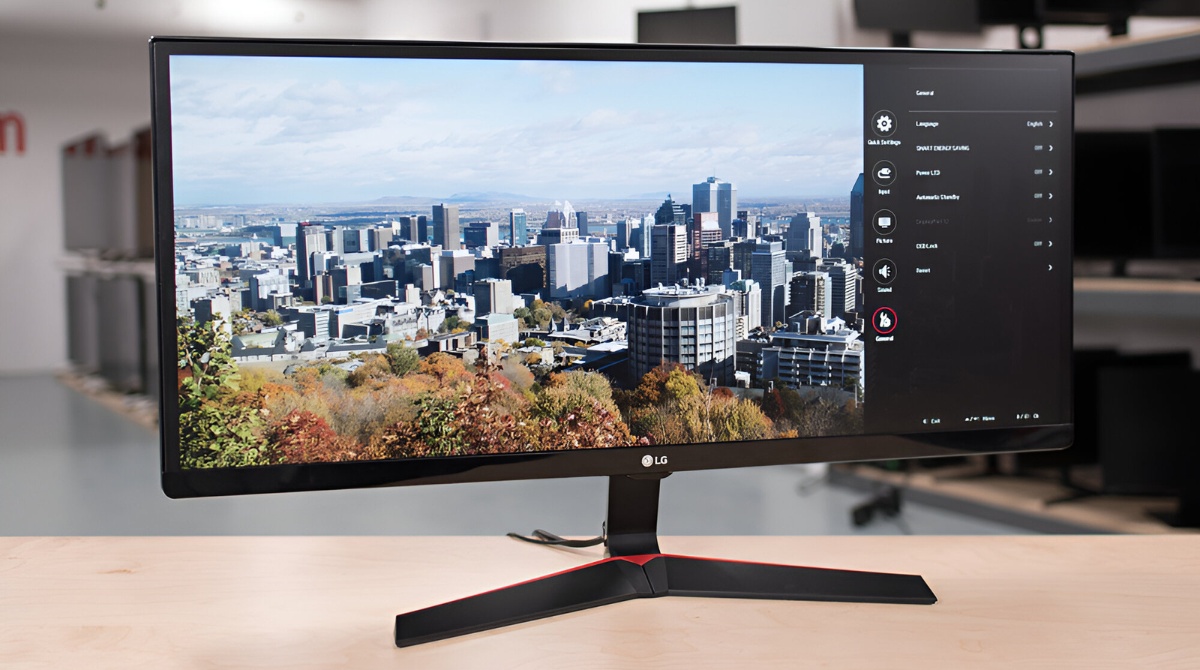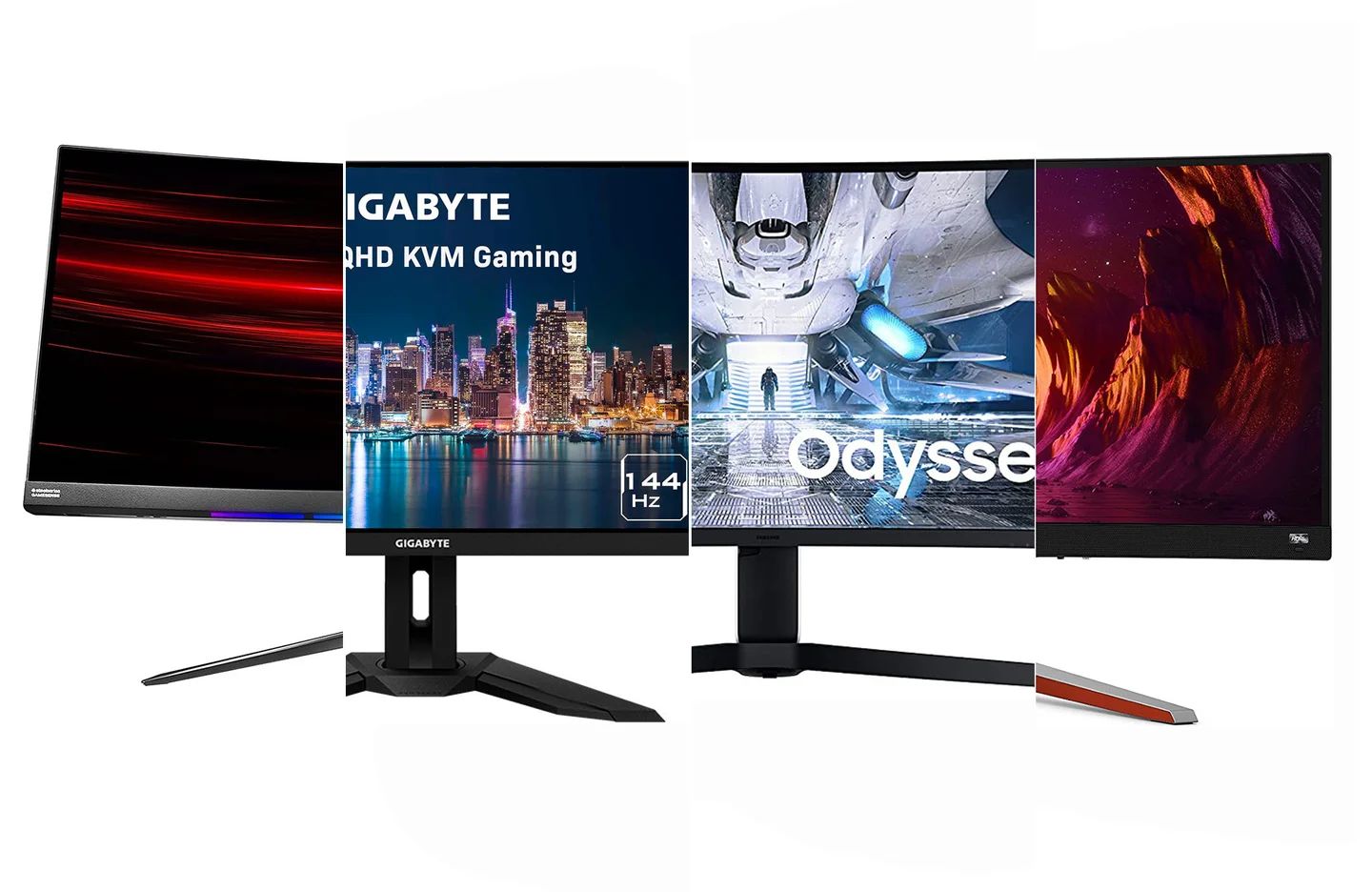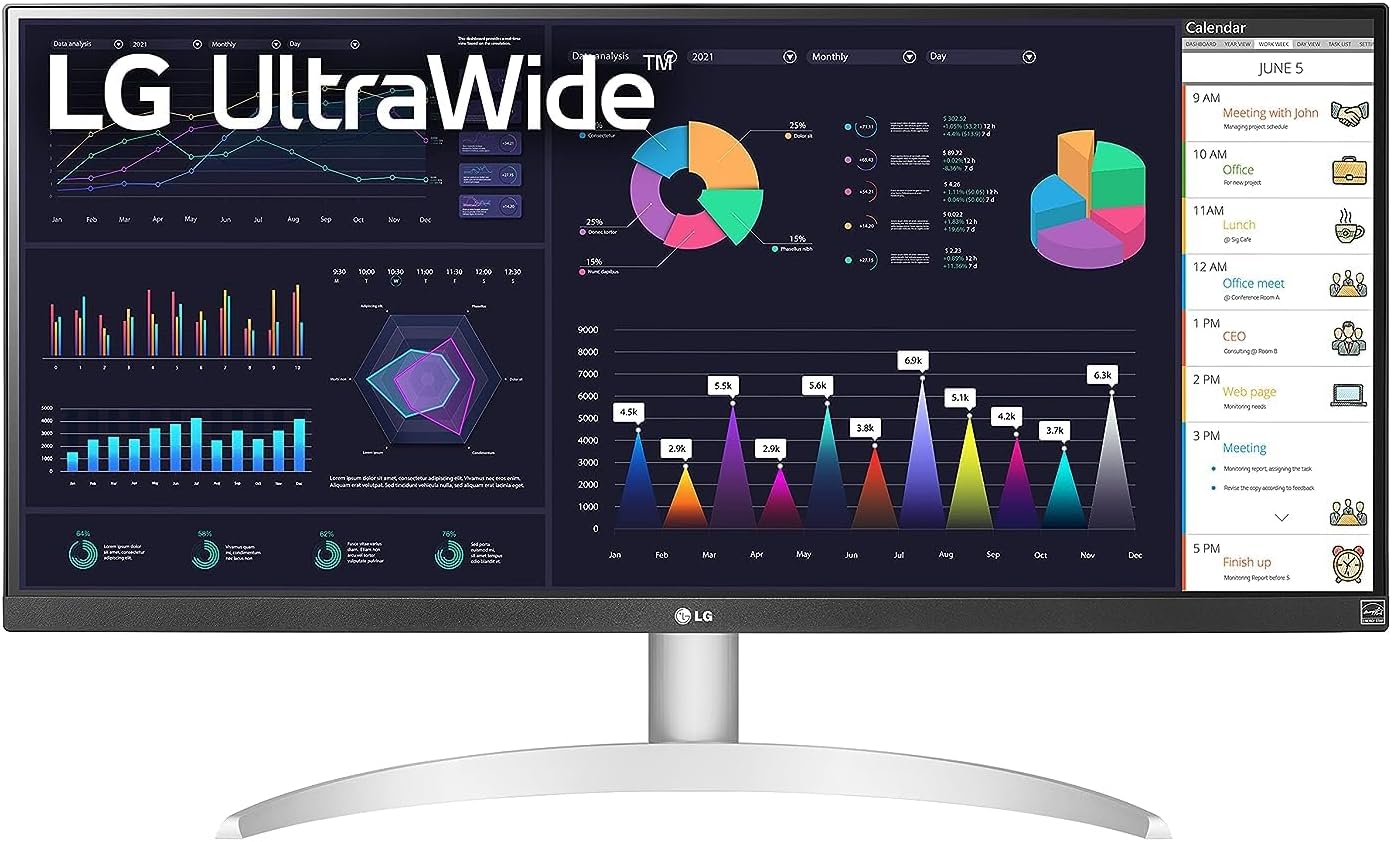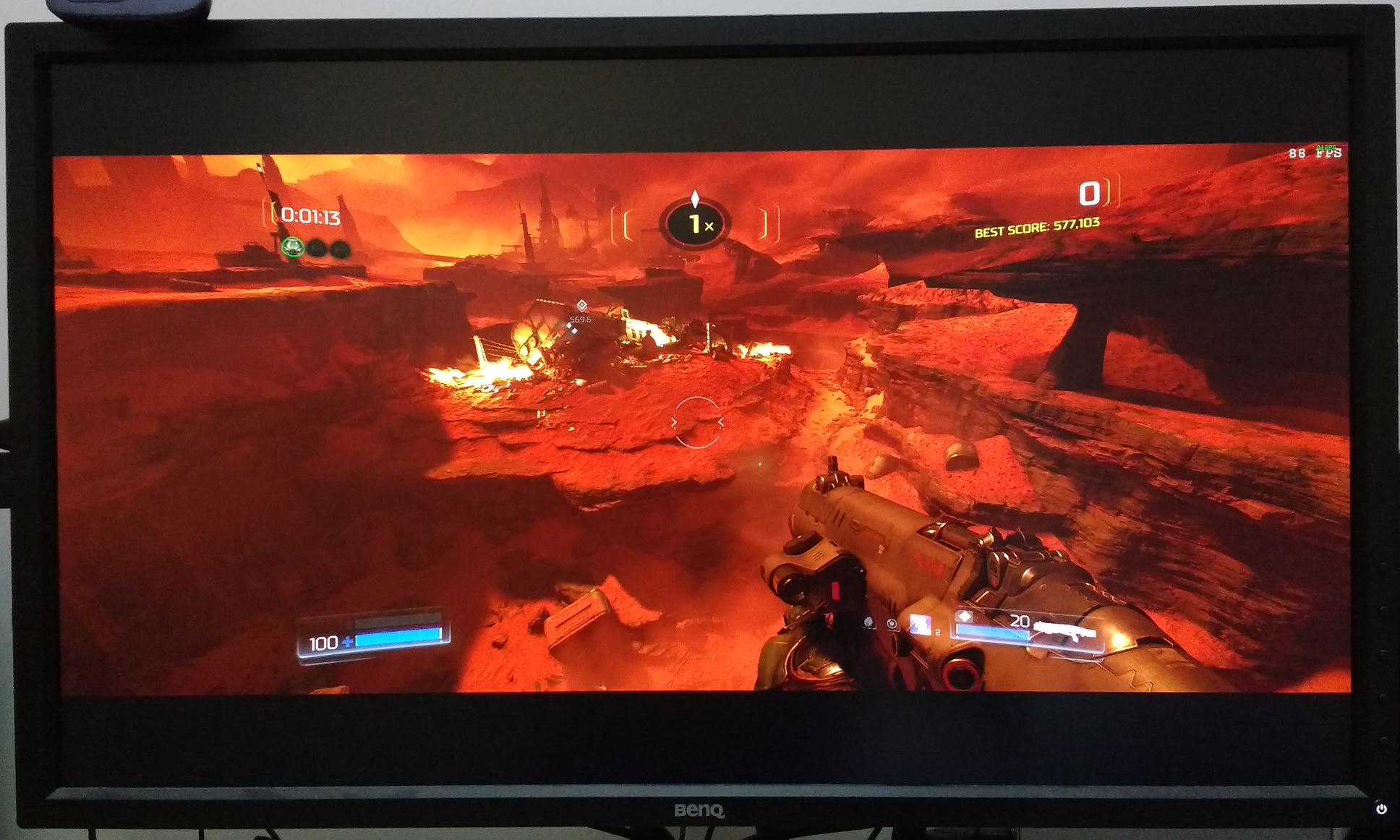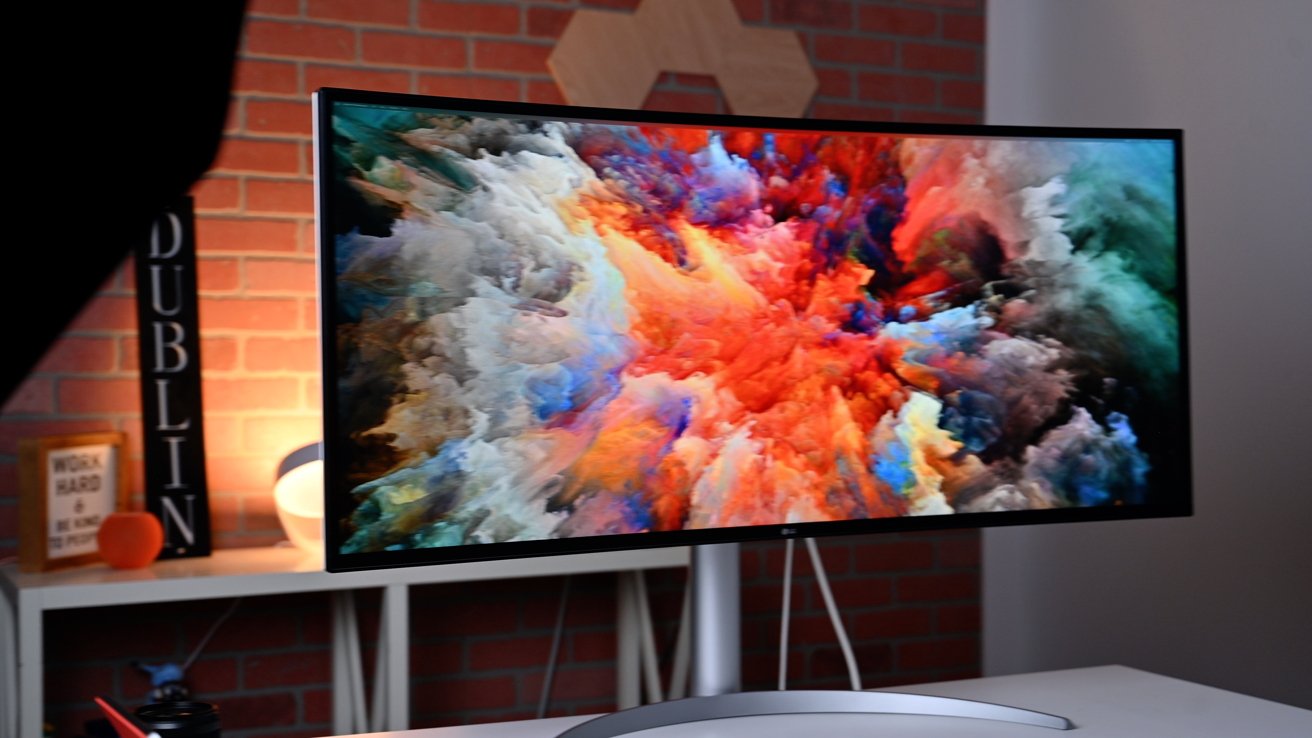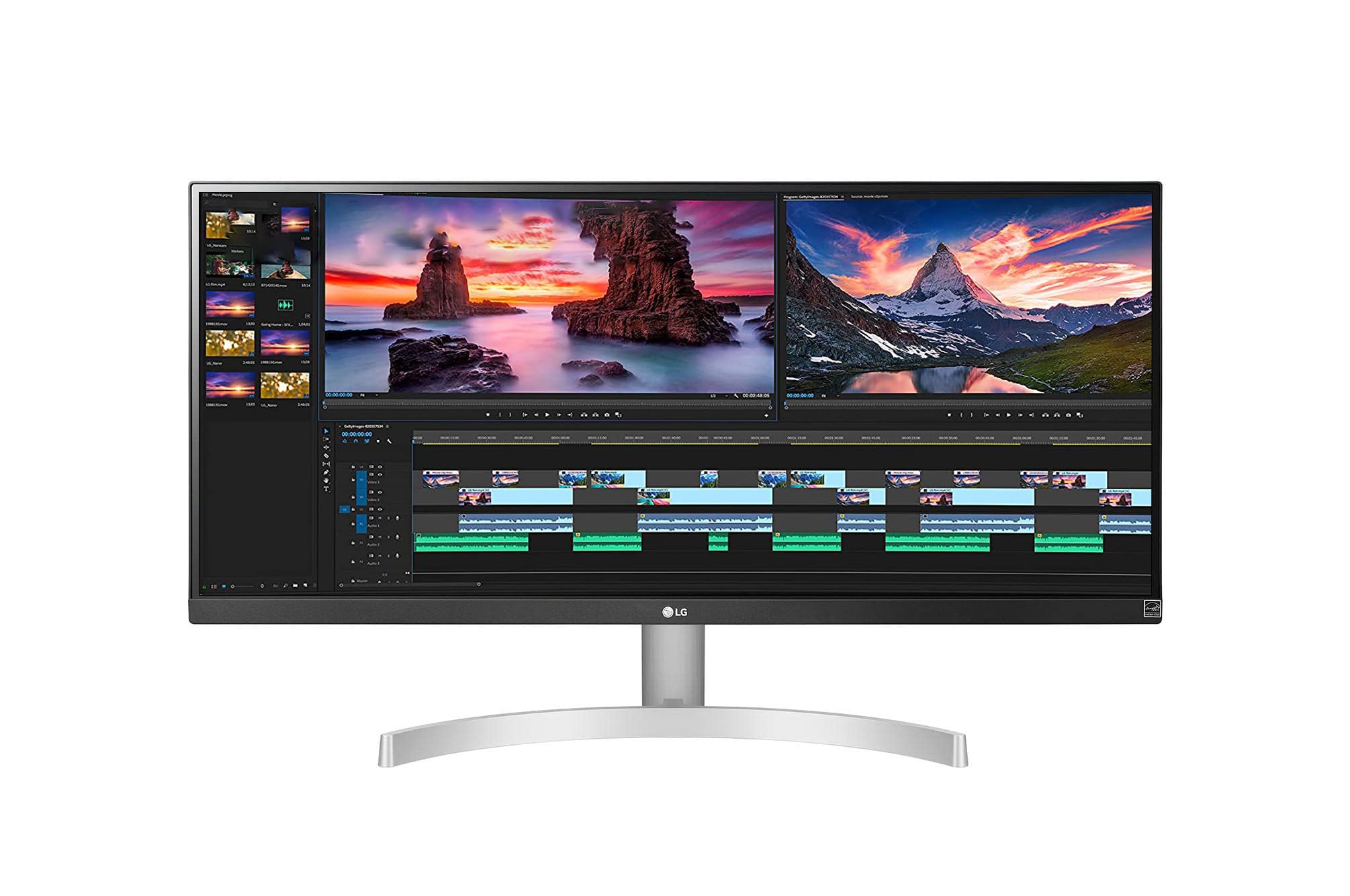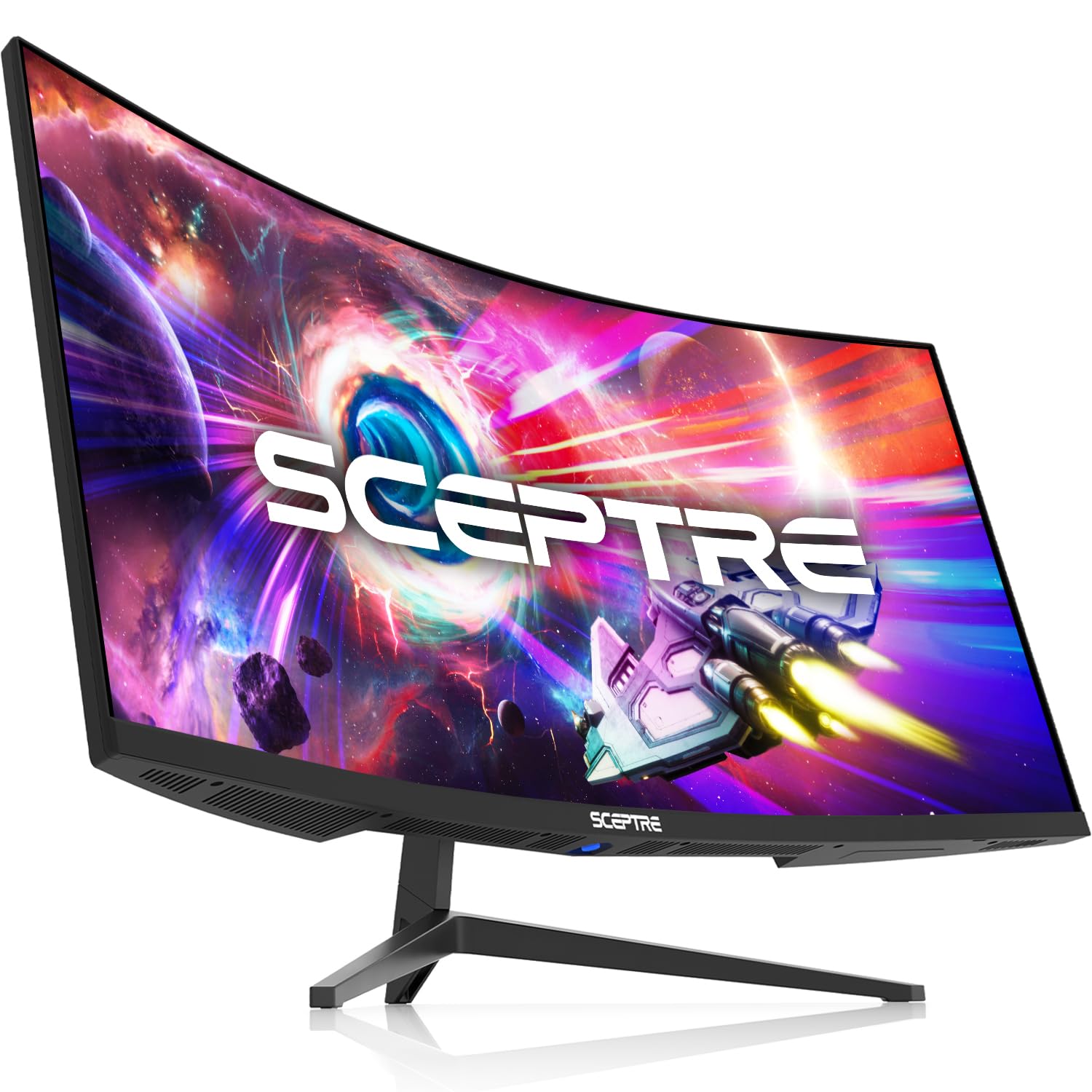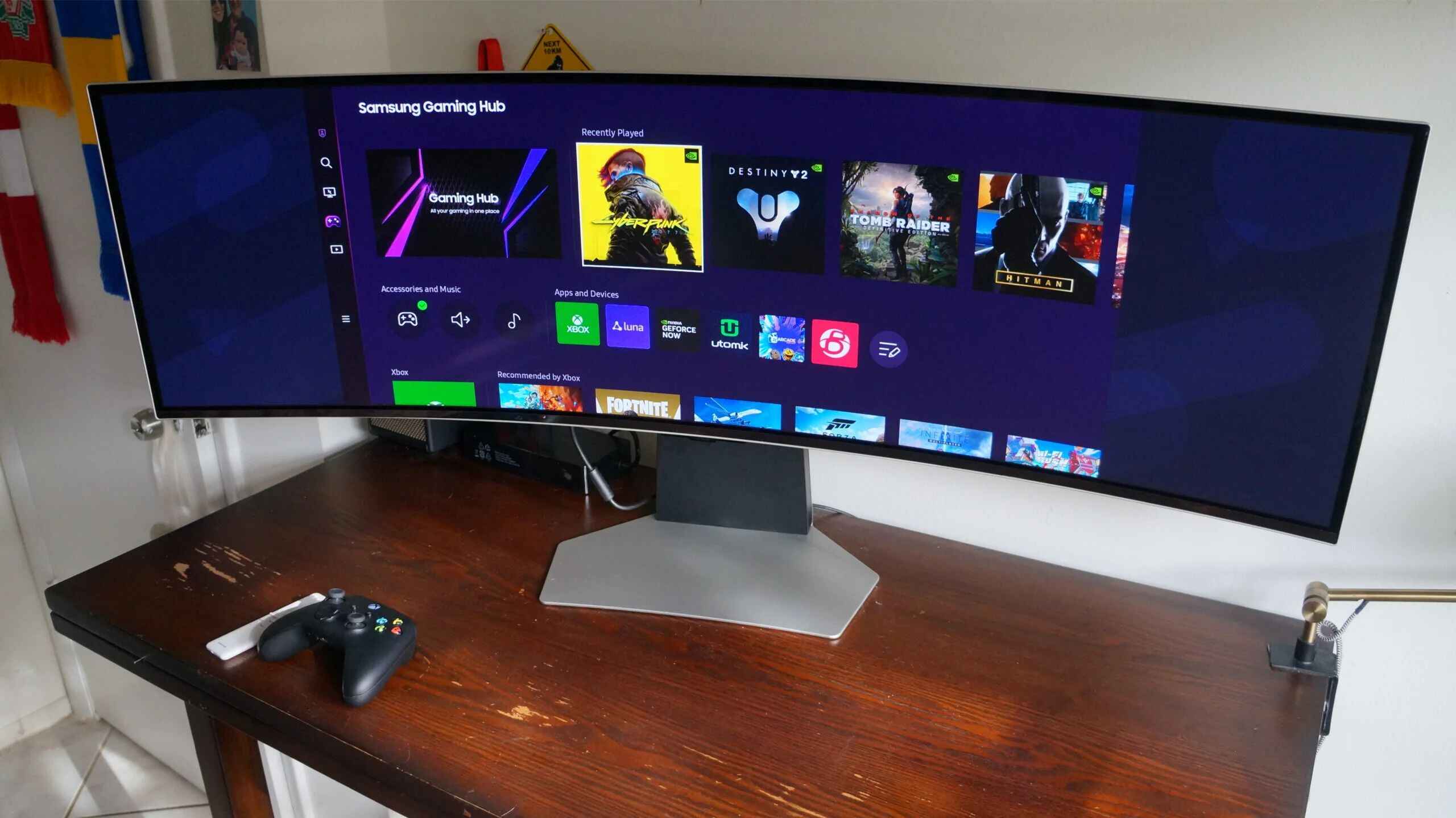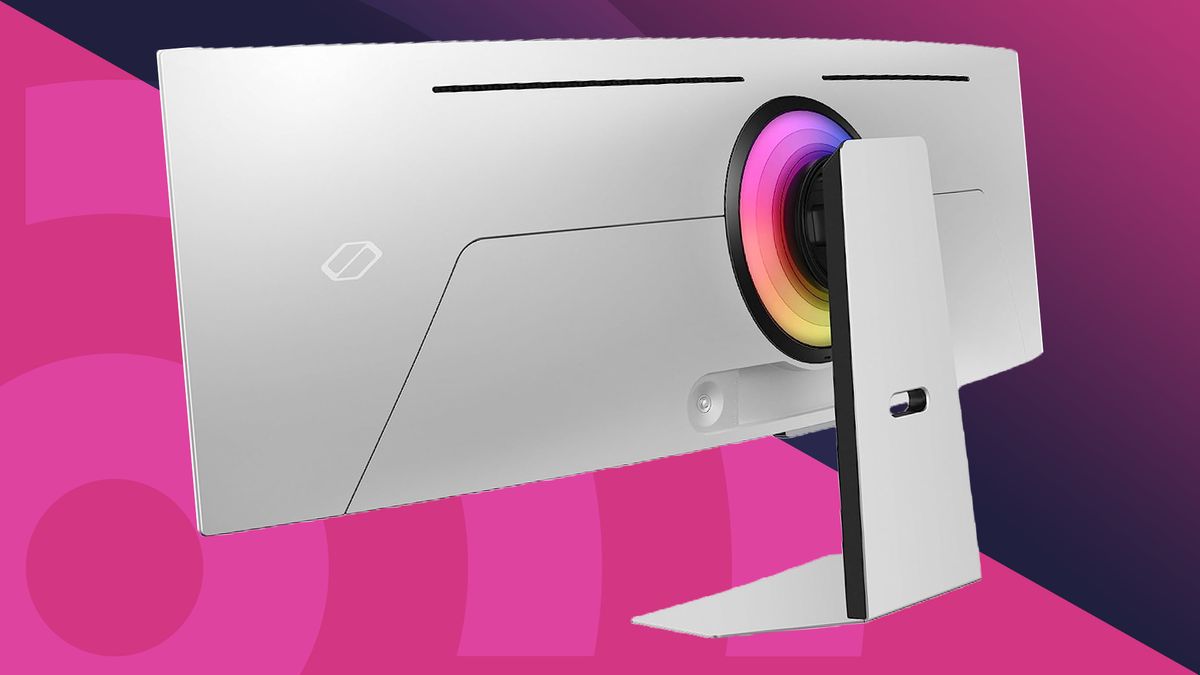Introduction
Welcome to this guide on how to make an LG Ultrawide monitor run at 75 Hz! If you’re a gamer or someone who values smooth visuals, you know the importance of a high refresh rate on your monitor. The LG Ultrawide series is known for its stunning display and versatile features, and being able to achieve a refresh rate of 75 Hz can significantly enhance your overall visual experience.
In this article, we will explore the steps you need to take to make your LG Ultrawide monitor run at 75 Hz. We will cover everything from understanding refresh rate basics to checking your monitor’s compatibility, adjusting display settings, enabling adaptive sync, making changes in graphics settings, and even overclocking your monitor if necessary. By the end of this guide, you’ll have all the knowledge and tools you need to unlock the full potential of your LG Ultrawide monitor.
Refresh rate refers to how many times per second the image on your screen updates. A higher refresh rate translates to smoother visuals, reduced screen tearing, and an overall more immersive experience. Most monitors have a default refresh rate of 60 Hz, but some are capable of higher rates, such as 75 Hz or even 144 Hz. By increasing the refresh rate on your LG Ultrawide monitor, you can enjoy smoother motion, faster response times, and a competitive edge in gaming.
Before we dive into the step-by-step process, keep in mind that not all LG Ultrawide monitors can achieve a refresh rate of 75 Hz. It’s essential to check your specific monitor’s capabilities to ensure compatibility. Additionally, altering the refresh rate and making other changes to your monitor’s settings may void your warranty, so proceed at your own risk.
Now, without further ado, let’s get started on unlocking the full potential of your LG Ultrawide monitor and making it run at an impressive 75 Hz.
Understanding Refresh Rate
Before we dive into the technical details of how to make your LG Ultrawide monitor run at 75 Hz, let’s take a moment to understand what refresh rate actually means. Refresh rate is a term used to describe the number of times per second that your monitor updates the image it displays. It is measured in Hertz (Hz). The higher the refresh rate, the smoother the motion on your screen appears.
By default, most monitors have a refresh rate of 60 Hz. This means that the image on the screen is updated 60 times per second. While this is perfectly adequate for everyday tasks like browsing the web and working on documents, a higher refresh rate becomes important when it comes to activities like gaming or watching fast-paced videos.
A higher refresh rate provides a couple of key benefits. Firstly, it reduces motion blur. When there’s rapid motion happening on the screen, lower refresh rates may struggle to keep up, resulting in blurry visuals. With a higher refresh rate, each frame is displayed for a shorter period of time, leading to less blur and a clearer image.
Secondly, a higher refresh rate enables smoother gameplay. In fast-paced games, a lower refresh rate can cause noticeable screen tearing, where the image appears to be split in two or have artifacts. By increasing the refresh rate, the monitor is able to display more frames per second, reducing the chances of screen tearing and creating a more seamless gaming experience.
It’s important to note that not all monitors can achieve higher refresh rates. Some are limited to 60 Hz, while others may have the potential to reach 75 Hz, 100 Hz, or even 144 Hz. The LG Ultrawide monitor series is known for its versatility and often offers higher refresh rate options. However, it’s crucial to check the specifications of your specific model to ensure its compatibility with a 75 Hz refresh rate.
Now that we have a clear understanding of what refresh rate is and its benefits, we can move on to checking if your LG Ultrawide monitor is capable of running at 75 Hz. In the next section, we will explore the steps to determine the compatibility of your monitor and make the necessary adjustments to achieve the desired refresh rate.
Checking Monitor Compatibility
Before you start making any changes to your LG Ultrawide monitor to achieve a 75 Hz refresh rate, it’s essential to determine if your monitor supports this higher refresh rate. Not all models are capable of running at 75 Hz, so it’s crucial to check your monitor’s specifications to ensure compatibility.
The first step is to find the model number of your LG Ultrawide monitor. You can usually find this information on the back of the monitor or in the monitor’s settings menu. Once you have the model number, you can search for the official specifications on the LG website or refer to the user manual.
Look for the refresh rate specification in the monitor’s details. It should indicate the maximum refresh rate supported by the monitor. If the maximum refresh rate specified is 75 Hz, then your monitor is compatible, and you can proceed with the next steps in this guide. However, if the maximum refresh rate is lower than 75 Hz, it means that your monitor is not capable of running at that refresh rate.
If your monitor is not compatible with a 75 Hz refresh rate, there are a few alternatives you can consider. Firstly, you can still attempt to increase the refresh rate, but keep in mind that there may be limitations or consequences, such as potential damage to the monitor or decreased image quality.
Another option is to upgrade to a different LG Ultrawide model that supports a higher refresh rate. LG offers a wide range of monitors, varying in features and specifications, so you may be able to find a suitable model that meets your requirements.
Lastly, if having a higher refresh rate is a priority for you, you might want to consider monitors from other brands that offer 75 Hz or higher refresh rates out of the box. It’s always worth exploring different options to find the monitor that best suits your needs and preferences.
Now that you’ve determined whether or not your LG Ultrawide monitor supports a 75 Hz refresh rate, you can move on to the next sections to make the necessary adjustments and maximize your monitor’s performance.
Adjusting Display Settings
Once you’ve confirmed that your LG Ultrawide monitor is compatible with a 75 Hz refresh rate, it’s time to make the necessary adjustments in your display settings. These settings can vary depending on your operating system and graphics card, but the general steps remain similar. Here’s how to adjust display settings to enable a 75 Hz refresh rate:
1. Windows:
On Windows, right-click on your desktop and select “Display settings” from the context menu. In the Display settings window, scroll down to the “Advanced display settings” section and click on “Display adapter properties”. In the pop-up window, navigate to the “Monitor” tab and select the desired refresh rate from the drop-down menu. Choose 75 Hz and click “Apply” to save the changes.
2. MacOS:
On MacOS, click on the Apple menu and select “System Preferences”. In the System Preferences window, click on “Displays”. In the Displays tab, hold down the “Option” key and click the “Scaled” button. A list of available refresh rates will appear, including 75 Hz if your monitor supports it. Select 75 Hz and close the System Preferences window to save the changes.
3. Graphics Card Control Panel:
If you have a dedicated graphics card from NVIDIA or AMD, you can also adjust the display settings using their respective control panels. Right-click on your desktop and select either “NVIDIA Control Panel” or “AMD Radeon Settings”. In the control panel, navigate to the display settings or display properties section, and look for the option to adjust the refresh rate. Select 75 Hz and apply the changes.
Once you’ve adjusted the display settings to a 75 Hz refresh rate, your LG Ultrawide monitor should now be running at its maximum capability. However, it’s essential to test and verify that the changes have been applied correctly. You can do this by opening a game or a video with fast motion and observing the fluidity of the visuals.
If you notice any issues after applying the 75 Hz refresh rate, such as screen flickering or artifacts, it’s possible that your monitor or GPU may not be able to handle the higher refresh rate. In such cases, you may need to revert to the default refresh rate or try other troubleshooting steps to resolve the problem.
Now that you’ve successfully adjusted the display settings to a 75 Hz refresh rate, you can enjoy smoother, more responsive visuals on your LG Ultrawide monitor. In the next sections, we will explore additional methods to optimize your monitor’s performance, including enabling adaptive sync and overclocking the monitor if needed.
Enabling Adaptive Sync
If you want to further enhance your gaming experience and reduce screen tearing, enabling adaptive sync is a recommended step. Adaptive sync technology, such as AMD FreeSync or NVIDIA G-Sync, synchronizes the refresh rate of your monitor with the frame rate of your graphics card, eliminating screen tearing and providing a smoother gameplay experience.
To enable adaptive sync on your LG Ultrawide monitor, you’ll need to ensure that your monitor supports the specific adaptive sync technology compatible with your graphics card. Here’s how to enable adaptive sync:
1. AMD FreeSync:
If you have an AMD graphics card and your LG Ultrawide monitor supports AMD FreeSync, you can enable it by following these steps:
– Open the AMD Radeon Settings or AMD Catalyst Control Center (depending on your graphics card driver version).
– Navigate to the “Display” or “Display Settings” section.
– Look for the option to enable AMD FreeSync and toggle it on.
– Save the changes and exit the control panel.
2. NVIDIA G-Sync:
If you have an NVIDIA graphics card and your LG Ultrawide monitor supports NVIDIA G-Sync, you can enable it by following these steps:
– Open the NVIDIA Control Panel.
– Go to the “Display” or “Set up G-Sync” section.
– Check the box next to “Enable G-Sync” if it’s not already checked.
– Click on “Apply” to save the changes.
Please note that enabling adaptive sync may require a compatible display port cable and a specific version of graphics card drivers. Ensure that you have the necessary hardware and software requirements before attempting to enable adaptive sync.
Once you’ve enabled adaptive sync, your LG Ultrawide monitor will dynamically adjust its refresh rate to match the output of your graphics card, providing a tear-free and smooth gaming experience. It’s important to test different games and applications to ensure adaptive sync is working correctly and delivering the desired results.
If you experience any issues or notice compatibility problems, check for firmware updates for your monitor, as well as the latest graphics card drivers. These updates often include optimizations and bug fixes that can improve the performance of adaptive sync. Additionally, some monitors may have specific settings in their menus to further customize adaptive sync behavior or adjust its range.
Now that you’ve enabled adaptive sync on your LG Ultrawide monitor, you’re one step closer to maximizing its performance. In the following section, we’ll explore the option of overclocking your monitor to potentially achieve an even higher refresh rate.
Making Changes in Graphics Settings
In addition to adjusting the display settings on your LG Ultrawide monitor, you can also make changes in your graphics settings to further optimize your gaming experience. These settings can help enhance the performance and visual quality, allowing you to get the most out of your gaming sessions. Here are a few key areas to consider when making changes in your graphics settings:
1. Graphics Control Panel:
Both NVIDIA and AMD offer graphics control panels that allow you to customize various settings to suit your preferences. These control panels provide options to adjust aspects such as anti-aliasing, texture filtering, and shader settings. Experimenting with these settings can help you find the right balance between visual quality and performance.
To access the control panel, right-click on your desktop and select the appropriate control panel: “NVIDIA Control Panel” for NVIDIA graphics cards or “AMD Radeon Settings” for AMD graphics cards. Explore the different tabs and options to make changes based on your preferences and the requirements of the specific games you play.
2. Game Settings:
Most games offer their own graphics settings menus that allow you to tweak various visual and performance-related options. These settings can include resolution, texture quality, shadow detail, and more. Adjusting these settings based on your hardware capabilities and personal preferences can greatly impact the overall gaming experience.
Take some time to explore the graphics settings within each game you play. Optimize the settings to strike a balance between visual fidelity and smooth performance. Consider lowering certain options that impact performance, while prioritizing others that enhance visuals or provide a competitive advantage. Each game may have its own unique settings, so take your time to fine-tune them accordingly.
3. Driver Updates:
Another important aspect of optimizing your graphics settings is regularly updating your graphics card drivers. New driver updates often include performance optimizations, bug fixes, and new features that can improve the overall gaming experience. Visit the website of your graphics card manufacturer and download the latest drivers for your specific card model to ensure you’re using the most up-to-date version.
Keep in mind that different games might have specific requirements or optimal settings, so make adjustments accordingly. It’s always a good idea to test your changes in-game to see the impact they have on performance, visuals, and overall gameplay. By fine-tuning your graphics settings, you can ensure your LG Ultrawide monitor delivers the best possible experience for each game you play.
In the next section, we’ll explore the option of overclocking your LG Ultrawide monitor to potentially achieve a higher refresh rate and further enhance your gaming visuals.
Overclocking the Monitor
Overclocking your LG Ultrawide monitor is an advanced option that involves increasing the refresh rate beyond its default capabilities. By overclocking, you can potentially achieve a higher refresh rate and further enhance the smoothness and responsiveness of your gaming experience. However, it’s essential to note that overclocking carries risks, and not all monitors can be successfully overclocked. Here’s how to proceed with caution:
1. Research and Preparation:
Before attempting to overclock your monitor, it’s crucial to research and understand the limitations and potential risks involved. Start by checking if your specific LG Ultrawide model has been successfully overclocked by others, as this can give you an idea of its overclocking potential. Look for online forums or websites dedicated to monitor overclocking to gather insights and instructions specific to your monitor model.
2. Custom Resolution Utilities:
To overclock your monitor, you’ll need a custom resolution utility software. Popular utilities include NVIDIA Custom Resolution Utility (CRU) or AMD Pixel Clock Patcher (for AMD graphics cards). These utilities allow you to create custom resolutions with higher refresh rates than the monitor’s default settings. However, use these tools with caution and ensure you follow the recommended steps and settings provided by experienced users or official sources.
3. Incremental Overclocking:
When overclocking your monitor, it’s best to do it gradually and test each increment to ensure stability and compatibility. Start by increasing the refresh rate by small increments, such as 5 Hz at a time. Apply the changes, and then thoroughly test the monitor’s performance using various applications and games. Monitor for any artifacts, screen flickering, or instability. If issues arise, lower the refresh rate to the last stable setting.
4. Monitor and GPU Compatibility:
Not all monitors are capable of substantial overclocking, and compatibility can vary based on the specific model and the graphics card you’re using. Some monitors may have inherent limitations that prevent them from achieving higher refresh rates, even with overclocking attempts. It’s important to be aware of these limitations and temper your expectations accordingly.
5. Cooling and Monitoring:
Overclocking can increase the strain on your monitor, potentially leading to increased heat generation. To mitigate this, ensure that your monitor has sufficient cooling and monitor its temperature during overclocking sessions. Avoid pushing the monitor beyond its thermal limits.
Remember that overclocking carries risks, and there is always a possibility of damaging your monitor or voiding the warranty. It’s crucial to approach overclocking with caution and understand that the results may vary. If you’re uncomfortable with the process or uncertain about the risks, it’s best to avoid overclocking your LG Ultrawide monitor and stick to its default settings.
In the next section, we’ll discuss testing and troubleshooting your LG Ultrawide monitor to ensure optimal performance and address any potential issues that may arise.
Testing and Troubleshooting
After adjusting the display settings, enabling adaptive sync, and potentially overclocking your LG Ultrawide monitor, it’s important to test and troubleshoot to ensure everything is functioning as intended. Here are some steps you can take to verify the changes you’ve made and address any potential issues:
1. Test Different Applications:
To ensure that your monitor is running at the desired refresh rate and providing optimal performance, test it with various applications, including games, videos, and other visually demanding content. Pay attention to the smoothness of motion, absence of screen tearing, and overall visual quality. If you encounter any abnormalities or glitches, proceed to troubleshoot the issue.
2. Monitor for Artifacts:
Artifacts are visual anomalies that can occur when a monitor is pushed beyond its limits. These anomalies can manifest as flickering pixels, screen distortions, or abnormal color patterns. Keep a close eye on your monitor during gameplay or content viewing to check for any artifacts that might suggest instability due to overclocking or other settings adjustments.
3. Monitor Temperatures:
Overclocking or prolonged use at higher refresh rates can generate additional heat in your monitor. It’s important to monitor the temperature of your monitor using software or built-in monitor OSD (On-Screen Display) features. If you notice that the temperature is reaching higher levels or your monitor is becoming excessively hot, it is advisable to reduce the overclock or revert to default settings to prevent any potential damage.
4. Revert to Default Settings:
If you encounter any issues or inconsistencies during testing, it is recommended to revert your monitor settings back to their default values. This will help you determine if the changes you made were the cause of the problem. If the issues persist even with the default settings, it may indicate hardware or software-related issues unrelated to the adjustments you’ve made.
5. Update Drivers and Firmware:
If you experience issues with your LG Ultrawide monitor, it’s always a good idea to ensure that you have the latest drivers for your graphics card and any available firmware updates for your monitor. Updating drivers and firmware can often resolve compatibility issues, fix bugs, and improve overall performance.
By thoroughly testing and troubleshooting your LG Ultrawide monitor, you can identify and address any potential issues that may arise. Remember to proceed with caution, monitor temperatures, and be prepared to revert or adjust settings as necessary. It’s essential to strike a balance between achieving desired performance and maintaining the longevity and stability of your monitor.
In the final section, we’ll summarize the key takeaways from this guide on how to make an LG Ultrawide monitor run at 75 Hz and wrap up our discussion.
Conclusion
Congratulations! You’ve reached the end of our guide on how to make an LG Ultrawide monitor run at 75 Hz. By understanding refresh rate, checking monitor compatibility, adjusting display settings, enabling adaptive sync, and potentially overclocking, you’ve taken important steps to enhance your visual experience and gaming performance.
Remember, each LG Ultrawide monitor model may have its own limitations and capabilities, so it’s crucial to check your monitor’s specifications before attempting any changes. Additionally, proceed with caution when overclocking and be aware of the potential risks involved.
Throughout this guide, we’ve emphasized the importance of testing and troubleshooting. By thoroughly testing your monitor’s performance with various applications and content, and monitoring for any artifacts or abnormal behavior, you can ensure that your monitor is running smoothly and as intended.
If you encounter any issues during testing, it’s always recommended to revert to default settings, update drivers and firmware, or seek support from LG or your graphics card manufacturer. Their expertise will help you address potential challenges and ensure optimal performance.
Now that you have the knowledge and tools to make the most out of your LG Ultrawide monitor, take the time to fine-tune your settings, experiment with different options, and enjoy a visually immersive and smooth gaming experience.
We hope this guide has been informative and helpful to you. Whether you’re a casual gamer or a graphics enthusiast, optimizing your LG Ultrawide monitor at a 75 Hz refresh rate can greatly enhance your visual experience and take your gaming to new heights.
Thank you for reading, and happy gaming with your LG Ultrawide monitor!







